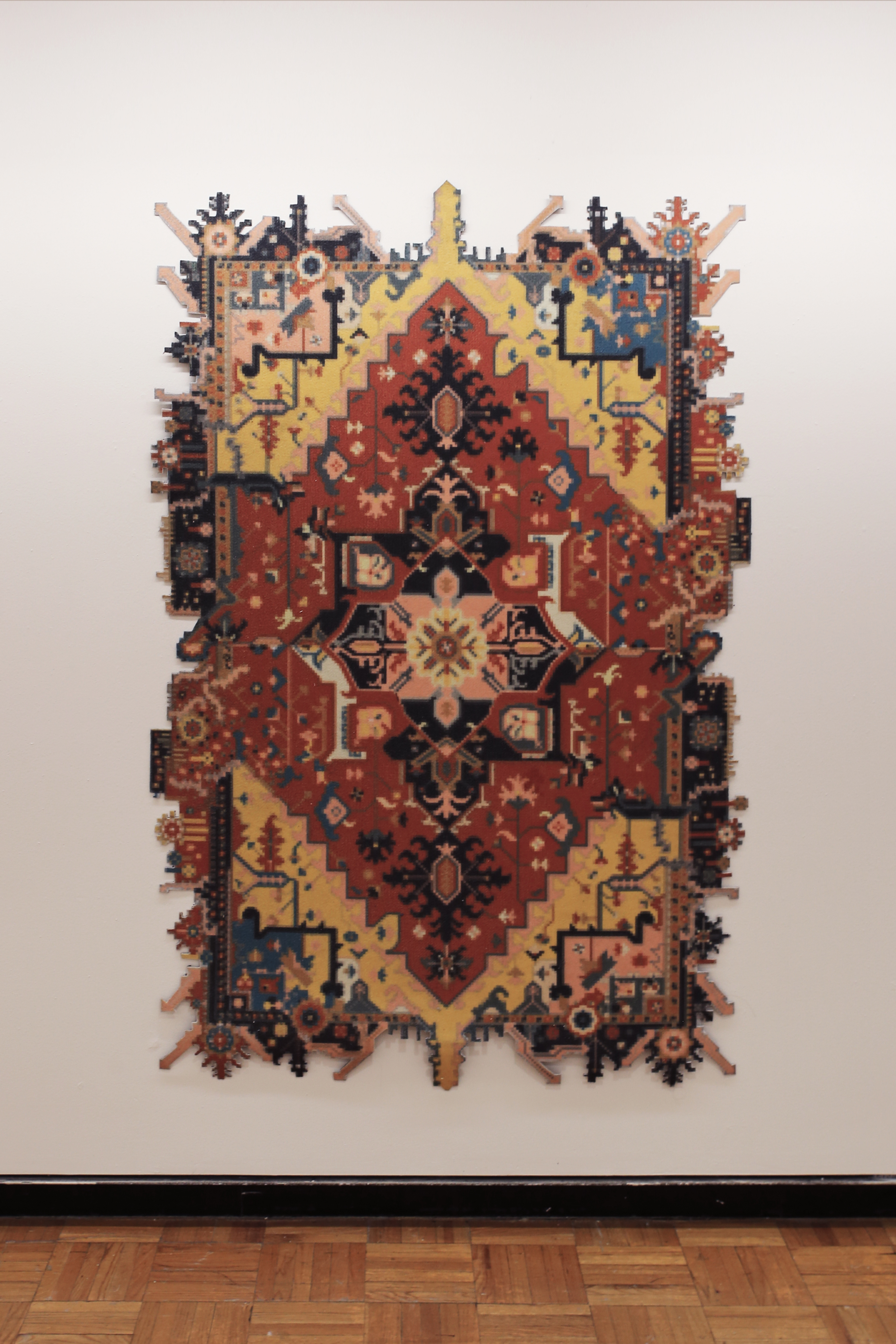Parafictional Object | Spring 2018 | University of Pennsylvania
Collaborator: Shichen Shen | Critic: Kutan Ayata

The conception of this carpet design is heavily related to questions of appropriation – where it begins, where it ends, what is authentic, what is fake, and perhaps what the cultural bounds of appropriation are. The tradition of rug making transcends boundaries – being present in Persian, Afghani, Caucasian, Turkish, Tibetan and Chinese cultures. There is little information on where it initially originated amongst these traditions, so perhaps one culture may have borrowed this tradition from another. Additionally, knot-piled rugs have been a fascination of the Western world since the 16th century and they have made appearances in Italian, English and Dutch paintings.



Rugs in Dutch paintings were rarely featured on the floor due to their price, though as time progressed they lost their prestige as a luxury object. This was probably due to the increased ties with India and Persia, as well as the existence of Dutch weaving workshops – creating an imitation of a craft that has richly embedded symbolism and cultural meaning.
Inspired by the universal fascination with rugs, this carpet design aims to examine and use commonly found symbols and patterns in rugs, and work through the aesthetics of how carpets are structured – with a field, figure, and frame, making use of a global symmetry.


It plays off the conventions of a carpet, but move into a fiction of creating a ‘low-res’, modern day version of a carpet that may have come from another culture. The fiction continues by representing the carpet in different scenarios – from the Mughal and Ottoman miniature paintings, to Hollywood’s obsession with ‘Arabia’ in the 1950’s, to the current day appearance in places like Ikea or the quintessential college dorm room.









